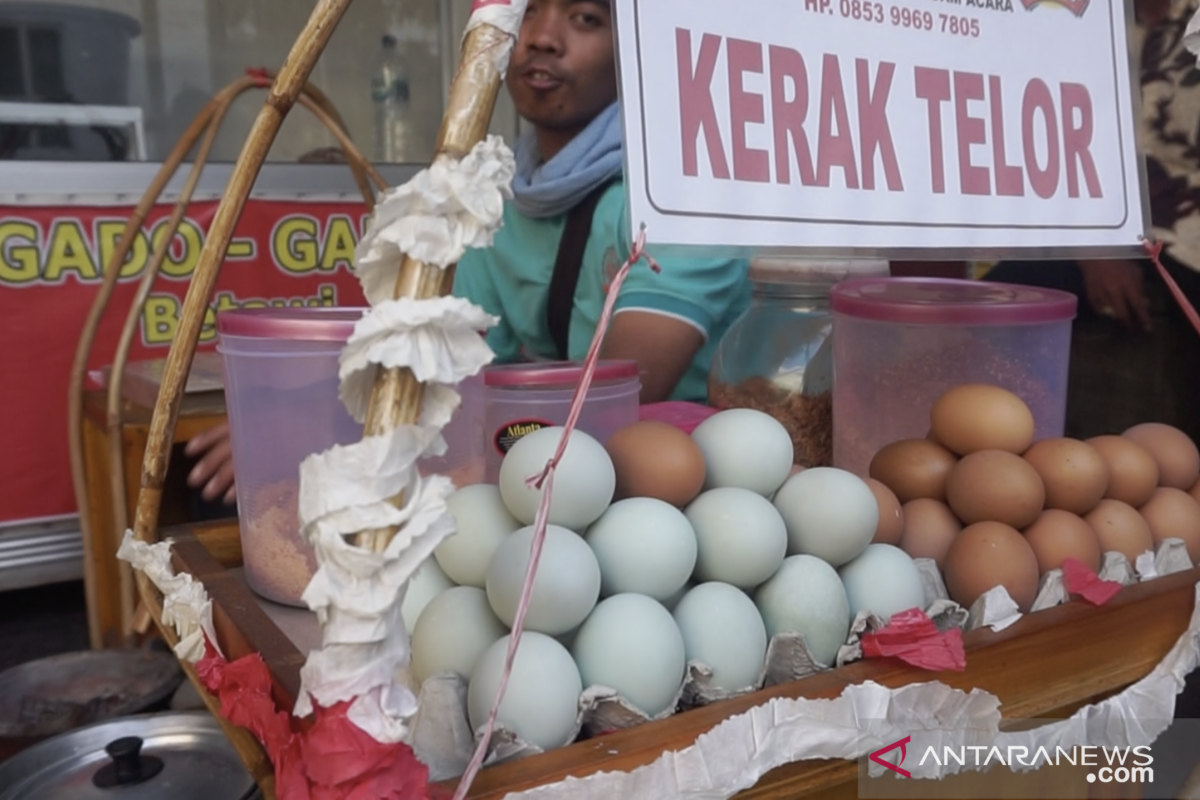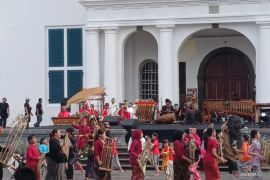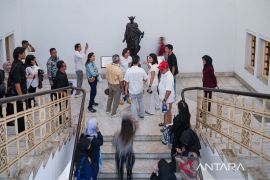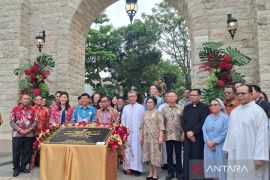As the sun makes its way to set into the horizon’s west end, the infamous Fatahillah Square often becomes packed with tourists. Among them, amateur photographers and selfie hunters.
Many have come to Kota Tua to bask in the old-time ambiance, but only a few make their way to the west side of the capital city to explore the food served in Fatahillah Square.
“I would not immediately think of Kota Tua when it comes to culinary,” said Pamela Sakina, who has visited Kota Tua many times. She said that to her, Fatahillah Square seem to be more of a educational tourism spot, because of the history it contains.
A similar statement was said by Risyal Hidayat, who said that there are no distinct culinary that would make him visit the Fatahillah Square. “I think it is more of a heritage site, not so much a culinary spot,” he said.
Related news: From palmist to living statues: transgressing sightseeing at Kota Tua
Jakarta Old Town’s Fatahillah Park may not strike visitors as the place to explore food, however, contrary to popular beliefs, this park houses a wide range of culinary delights that are fit for an adventure.
Traditional and modern dishes alike are laid before the visitors’ eyes for them to choose, and satisfy their palate and appetite. While discovering the development of old Batavia and its emergence in becoming Jakarta as we know it, tourists can enjoy a selection of traditional dishes at the Jakarta History Museum.
Kerak telor is one of the staples, when it comes to culinary dishes of the indigenous Jakartans, known as the Betawi tribe. It mainly features a mix of sticky rice grains and a choice of duck or chicken egg. These two main ingredients give kerak telor its omelette-like appearance. It is then completed with the classic salt and pepper, as well as a punchy taste of powdered dried shrimp. It is finally topped with a sprinkle of spiced coconut shreds.
Given its grain base, Kerak Telor can be a filling dish, although not quite as satisfying as a full meal. It would be best to eat it further away from dinner time, or as an alternative to supper.
To accompany the savory cuisine, in the same area, another street stall serves the sweet, sour and spicy sensation of Tahu Gejrot. Unlike kerak telor and its Betawi origin, this dish originated from Cirebon, West Java. Its simple appearance reflects the straightforward ingredients it contains, including chopped fried tofu, with a sweet, spicy and sour water-based sauce, made from some palm sugar, garlic, salt, tamarind, chili, and shallots.
Related news: Exploring the past through Kota Tua Jakarta museums
When the time comes to wash it all down, a fresh tall glass of es selendang mayang is just around the corner. Still in the vicinity of the museum, the half beverage, half dessert pink drink contains mung bean flour-based cakes, served with coconut milk, some sweet syrup or condiment, and lots of ice to balance all the flavor and textures.
Along the strip outside of the museum, there is also a selection of modern cafes. To name a few, there are Kedai Seni Djakarte, Historia Food and Bar, Locarasa and Acaraki Café.
Despite their modern ambiance, these restaurants also serve Indonesian delights. For those who fancy a warm bowl of mie godog or the smoky goodness of sate ayam, Kedai Seni Djakarte is the place to go. They also serve other Indonesian dishes, as well as the infamous Indonesian coffee with a variety of origins.
Acaraki café, located in the Kerta Niaga 3 building of Fatahillah Square, serves a selection of traditional herbal beverages known as jamu, and each variation has its own benefits for bodily health. They also take these age old drinks up a notch and serve them with other condiments, such as the Golden Sparkling (tamarind drink with sugar and soda) and the Rigalize (saffron rice, sugar and soda).
All of the dishes and beverages served in cafés or inside museum grounds have relatively affordable prices. Most of them are under 100,000 rupiahs (or around 7 US dollars).
Related news: Kali Besar, an ocular feast in the old town of Jakarta
However, for a more fancy, vintage ambiance, visitors can come into the classic Café Batavia, located in the heart of the square. Its green canopy and colonial style windows on the second story of the building have become quite popular in the area. The building, itself, is as rich in historical value as it was when first built in 1884.
Café Batavia serves a wide range of menus, from Western dishes to Chinese culinary and Indonesian traditional food.
Compared to other restaurants in the area, this particular restaurant has far heftier price tags on their food, but it does not make visitors shy away from stepping through their doors.
Street vendors are also part of the Old Town’s culinary scene. Many of them are scattered across the area, and beyond, selling traditional snacks and beverages. Chief of Jakarta Old Town Management Office Norviadi Setio Husodo hoped, in the future, that they can also become an integral part of the Fatahillah Square.
“I hope they can create their own cooperative (koperasi) and community. One day, maybe, they can be given their own space in one of the vintage buildings that we can utilize here in Fatahillah,” he said, adding that he was inspired by the Grand Bazaar in Istanbul, Turkey.
Be it street vendors, quirky cafés or a fancy bar, it is safe to say that Jakarta’s Old Town does not lack in culinary choices. Endless options and wide-ranging prices make the spot not only rich in heritage, but also tasty sensations.
EDITED BY INE
Related news: Jakarnaval 2019 portrays local and foreign culture, arts
Editor: Azizah Fitriyanti
Copyright © ANTARA 2019












